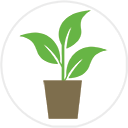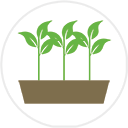English yew hedges, otherwise known as "Taxus baccata", are a an evergreen species featuring dense, dark green foliage and red, berry-like arils.
The yew's adaptability to various soil types and resistance to different weather conditions make it a popular choice for formal hedges and topiary.
Growth rate: Medium 20-40cm per year
Overall height: Medium up to 5 metres
Position: Full Shade, Full Sun, Exposed, Sheltered
Root Types: Bare Root, Instant Hedging, Pot Grown, Root Balled
Choose from our wide range of English Yew Hedge sizes and root types, or browse our other varieties of Yew Hedging plants.
Check our range of Yew Hedging or our other popular varieties of hedge that can be used as a great alternative to English Yew Hedge.




